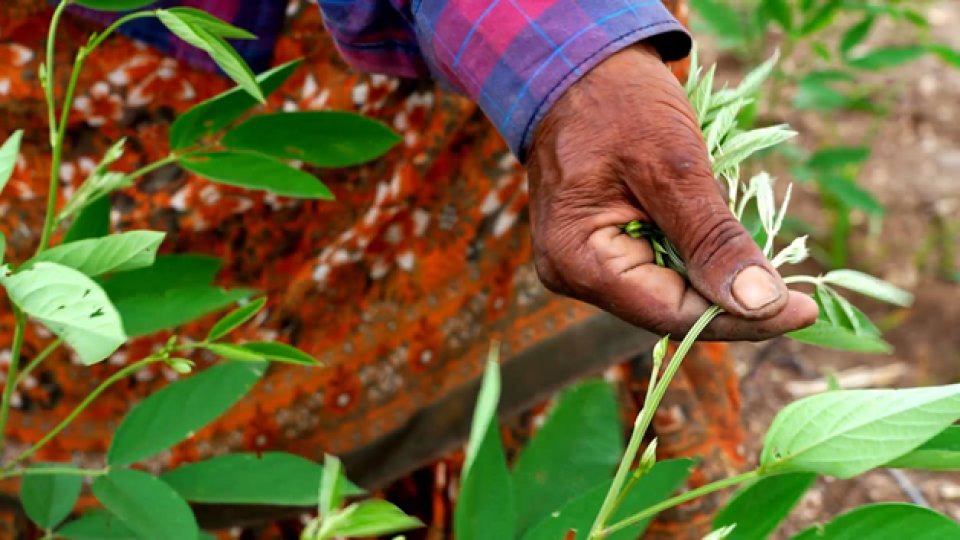Guidelines for translating video scripts
-
Request a copy of the script (in English or French) using the “script request” button below the video you are interested in. You will need to complete the form that opens. The script will be in landscape format and will be in sections (shots).
-
Each section will have a time beside it in seconds, this is the duration.
-
Read the script aloud to get an overall idea of the content, style and language used. Watch the video so you get to know the subject and style and for interviews who is talking – man/woman/young/old…
-
If you do not understand some sections or words, contact a subject matter specialist even before trying to translate.
-
If the intended audience is farmers, you must think like a farmer and not use complicated words or phrases. If something is technical, ask yourself if there a simpler way to say it.
-
Type out the translated script with 1.5 or double space in the second column. This is to make it easy to read when recording the voice over.
-
Make sure you translate the TITLE of the programme as this will need to be recorded.
-
If your alphabet is very different from the Roman alphabet, spell out the words phonetically in a third column, so that anyone who will work on the audio can follow the script, irrespective of their knowledge of your language.
-
Use punctuation effectively so that when others read out your translated script they know where to pause and where sentences stop.
-
Video scripts are written for the spoken word, so they do not always follow strict grammatical rules. Try to maintain the style of the original script. Simplify and reduce the words as much as possible.
-
Timing is all important – make sure the translation is the same duration or less than the original. Keeping to the timing of each section (shot) is VERY important. The timings listed after each shot indicate the maximum length for the person reading out the voice over. It MUST NOT be any longer, otherwise you will have to do the translation again.
-
Not every word needs to be translated but the original meaning must be conveyed in an easy to understand way.
-
Read out the translated script to staff working with the target audience. Do the words ‘flow’ when they are spoken out loud? Will the intended audience understand what is being said?
-
Change any words or phrases that may be unclear to your target audience.
-
Always ask someone to check the translated script before recording, to ensure it is technically accurate.
Guidelines for recording voice-overs
-
The person recording the voice over of the new language should be skilled in recording with their voice, usually it is best to use someone from a radio station.
-
If the person recording has not translated the script then allow time for them to read the script (and watch the video). They may need to make a few adjustments so the script flows for the spoken word.
-
Record all the voice over for one programme at the same time, including the translated title. Otherwise the tone of the person’s voice and/or the acoustics in the room may change.
-
Have plenty of water available for the voice-over person.
-
If you are using an audio recorder such as the Zoom H1 Handy recorder, first find a suitable location to do the recording.
-
If you are not in a studio, use soft items such as cushions and blankets in the area around the microphone to provide better acoustics.
-
Ideally record the audio files as WAV 48KHz 16bit. Read the instruction leaflet – know your audio recorder.
-
Use headphones to listen during the recording. The quality of the recording is YOUR responsibility.
-
Check the audio recording level. Record at good volume with no distortion. Distortion cannot be corrected.
-
Keep the microphone slightly to one side of the voice over person to avoid any “popping”.
-
Make sure the voice is conversational and NOT JUST READING.
-
First do a test recording and listen back to the recorded file before proceeding with recording the full programme, so you are certain that the audio recorder is working correctly.
-
The duration of each section of voice should be as close to the timing indicated on the script – certainly no longer.
-
If there is a mistake during the recording or loud noises, stop the recording and re-record it. Make a note on the script that you have recorded another version of that shot.
-
Stand the microphone on a tripod, if you hold the microphone you will probably record noise from your hand.
-
Press the button to start the recording, allow 2 or 3 seconds BEFORE the voice starts. At the end of that shot allow 2 or 3 seconds before pressing the button to stop the recording.
-
Once you have finished the recording, switch off the recorder to save power on the battery (always ensure you have a spare battery).
-
If you are recording more than one programme, it is a good practice to copy the files from the first programme onto a computer before starting to record the second programme. By working in this way you know exactly which files are for which programme. Place the files in a folder that is named according to the language and programme.
-
If you are recording the voice in a studio, apply the same principles as above for the audio recorder.
-
Always ask the sound engineer to wear headphones during the recording – or wear them yourself.
-
Always check the quality and timings of the recording before you leave the studio, it will be more difficult to correct any mistakes once you have left.
-
It is best practice to rename the audio files with the programme name, language and shot number. Double check the files for any errors, and check the timings of each shot – they must not be longer than indicated on the script.
-
Send Access Agriculture the WAV files, or, if you have EDITING EXPERIENCE, please see the instruction: Guidelines for creating new language versions of videos.
Guidelines for creating new language versions
IF YOU HAVE AUDIO EDITING EXPERIENCE
-
Transfer the files from the audio recorder to the editing computer. Place them in a folder that has been named for the language and programme.
-
It is best practice to rename the audio files with the programme name, language and shot number.
-
Start a project in your audio editing software. One free audio editor is “Audacity”, it can be downloaded here: https://www.audacityteam.org/ and can be installed in a number of different languages.
- Ask Access Agriculture for the English or French WAV guide track of the video. Import this file into your editing project
-
Now import the folder/files containing the new language files.
-
Use the guide audio track of the video to position the audio files of the new language, do not forget to place the audio that has the title of the programme. If you have watched the video you will know where this appears, if in doubt request this information from Access Agriculture.
-
DO NOT alter the length of the video programme.
-
If any of the new voice files are too long they will need to be re-recorded.
-
When the new language audio files are in position, ‘switch off’ (mute) the audio track with the guide voice.
-
Make sure the levels of the new voice are at a good volume and you cannot hear any breaths or clicks.
-
When you are satisfied that the audio is good, export the audio as a WAV 48Khz 16 bit audio file.
-
Send the audio file you have exported to Access Agriculture, we will then put the new language version of the programme together and upload it onto the website.
REMEMBER!
Pay attention to detail at every stage.
Always aim to produce a QUALITY programme.


